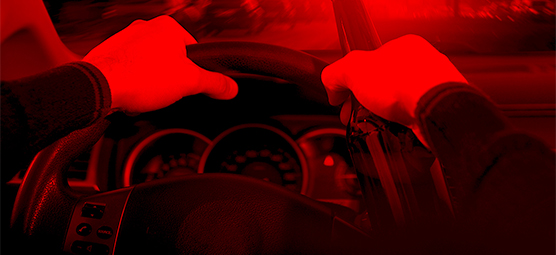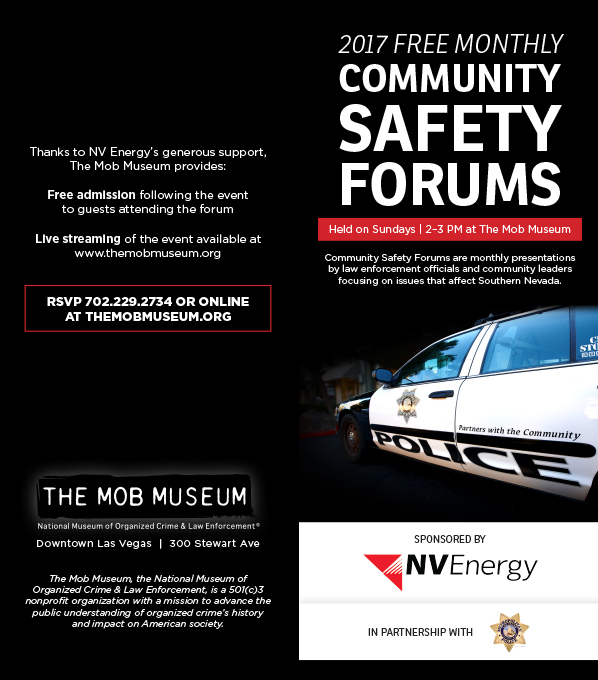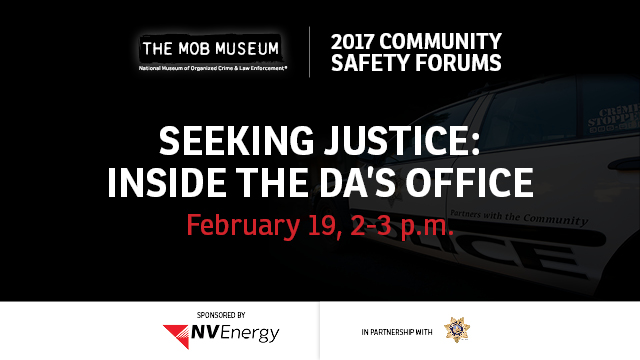High behind the wheel
Nevada’s legalization of recreational marijuana could mean bumpy road for motorists

The next Community Safety Forum will focus on the functions and responsibilities of the District Attorney’s Office. It is scheduled for 2 p.m. Sunday, February 19. RSVP at 702-229-2734 or online at themobmuseum.org.

Now that recreational marijuana has been legalized by Nevada voters, drivers should know that only a small amount of the drug in their systems could qualify as driving under the influence, a Las Vegas Metropolitan Police Department sergeant said Sunday during a Community Safety Forum at The Mob Museum.
The legal standard for arrest on suspicion of misdemeanor DUI for marijuana is just 2 to 5 nanograms of THC — the active ingredient producing the drug’s high — in a driver’s blood, equal “to only two or three puffs on a marijuana cigarette” or bites from an “edible” such as marijuana-laced candy or cookies, Sgt. Peter Kisfalvi said.
Motorists using pot have to realize they might be driving under the influence, as the levels of THC in today’s smoked and edible marijuana are much higher than in in previous decades and the intoxicating effects may last up to 12 hours, said Kisfalvi, a 24-year Metro Police veteran, including 19 years as a traffic officer.
“Back in the ’60s and ’70s and even in the ’80s, if you had a joint, or a marijuana cigarette, you usually had about 6, 7, maybe 10 percent THC in it,” he said. “The new weed, or marijuana, that’s out there on the street right now could be as high as 80 percent, especially when it comes to edibles and concentrated ones.”
In Colorado, the first state to legalize recreational use in 2012, studies have shown that people are actually overdosing on marijuana, mainly from ingesting too much from edibles, he said.
“Some of [the edibles] look like Gummy Bears, some of them look like chocolate bars, some of them look like chocolate chip cookies,” Kisfalvi said. “So, if you are a young person in a room, do not accept anything from anybody unless you know who they are.”
Marijuana edibles contain labels warning consumers not to eat more than one piece at a time to avoid an overdose, but some users still don’t consider the consequences, he said.
“What they are finding out is that people buy these chocolate bars and they break off a piece and they eat it,” he said. “For [it] to go through your digestive system and actually take effect, it takes time. So they don’t feel the effect immediately, so they eat another piece. Still nothing. So they eat another piece. They end up eating the whole chocolate bar, which will send them to the hospital.”
Ingesting too many marijuana edibles is consistent with drinking high levels of alcohol as far as impaired driving is concerned, he said. Those who believe they can resume driving a few hours after using marijuana – including smoking — are mistaken, because the effects normally remain in the bloodstream and digestive system for 12 hours.
Police can detect whether a driver is intoxicated by marijuana from field sobriety tests used to assess alcohol use, such as if the driver has trouble walking, dilated pupils, is confused or has difficulty performing more than one task, Kisfalvi said.
 Following a suspect’s arrest on suspicion of DUI from marijuana use, the person’s urine or blood is drawn for testing at a lab. The tests take 30 to 60 days to complete, and anyone whose results reach 2 to 5 nanograms – or a billionths of a gram, those two puffs’ worth — may be considered legally intoxicated. Marijuana also may be detected in a user’s hair for 30 days, he said.
Following a suspect’s arrest on suspicion of DUI from marijuana use, the person’s urine or blood is drawn for testing at a lab. The tests take 30 to 60 days to complete, and anyone whose results reach 2 to 5 nanograms – or a billionths of a gram, those two puffs’ worth — may be considered legally intoxicated. Marijuana also may be detected in a user’s hair for 30 days, he said.
Under Nevada’s legal pot law, passed by voters last November, it is illegal to smoke marijuana in a public place or a car. The same goes for passengers in a car, and anyone under age 21. However, the law does allow pot smokers or eaters to consume it on their private property, which includes within their fenced backyards, Kisfalvi said.
As for alcohol, the state’s standard for being legally drunk is a blood-alcohol concentration (BAC) level detected at a minimum of 0.8, equal to consuming two to three alcoholic drinks in one hour. It takes your liver about one hour to metabolize one drink, he said.
Las Vegas, where alcohol is legally available 24 hours a day, has a rather high rate of arrests for DUI – 7,500 to 8,000 a year, or 1 person in 200 – about double that of Portland, Oregon, a city of comparable population size, Kisfalvi said.
While annual arrests for DUI from alcohol consumption are down from heights of 10,000 to 11,000 recorded a decade ago in Las Vegas, arrests based on the influence of drugs – from illegal drugs to marijuana, pain killers and other prescribed medicines – are on the increase.
In Nevada, a first-offense misdemeanor DUI is punishable by up to two days in jail, a fine, community service and attendance at a victim’s impact panel. A second offense means 10 days in jail and higher fines, and a third arrest in seven years is a felony carrying upwards of a year in state prison. Subsequent arrests are felonies as well.
Another typical example of distracted driving these days is motorists using their mobile phones – chatting, texting, watching a movie — while behind the wheel. People looking down on their screens while cruising at 45 mph “miss” 60 feet of road space per second. Taking five seconds to send a text message at that speed would mean being blind for a stretch of 100 yards, the length of a football field.
Nevada’s law permits “hands free” use of mobile phones – such as mapping routes using GPS — in cars as long as the device is mounted in a holder and not held while driving. That law is at the administrative level, meaning that breaking it is not a moving violation and no points on the person’s driving record, but fines range from $50 for a first offense, $150 for a second and $250 each thereafter.
The state law is not the only violation for which a traffic officer may cite you for talking or texting on your phone while driving. Clark County and Las Vegas have separate ordinances permitting police to write tickets to phone-holding drivers for “not paying full attention to driving,” which is a moving violation worth a $195 fine and three points on their driving records, Kisfalvi said.
Feedback or questions? Email blog@themobmuseum.org





